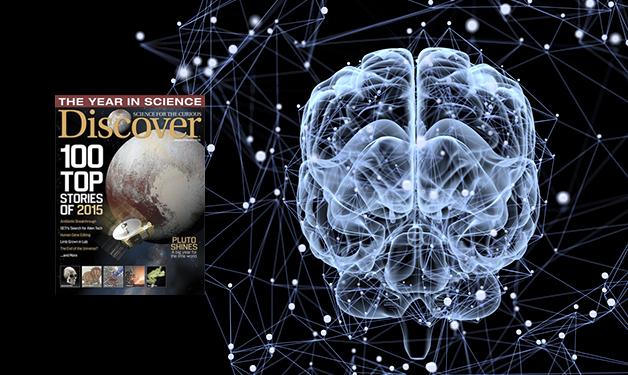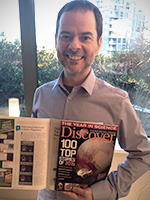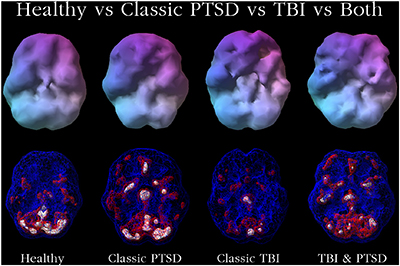
Brain scan research makes Discover Magazine’s top 100 list.
Vancouver Coastal Health Research Institute scientist Dr. Robert Tarzwell’s research is creating a space for neuroimaging in psychiatry that has not existed until now. Two studies co-authored by Dr. Tarzwell that were published in 2015 have demonstrated the efficacy and accuracy of using brain scans – and more specifically, single-positron emission computed tomography (SPECT) functional neuroimaging – to help diagnose and ultimately better guide treatment for post-traumatic stress disorder (PTSD) and traumatic brain injury (TBI). The studies’ findings were significant enough to be highlighted in the latest issue of Discover Magazine, nabbing the number 19 spot on its list of the top 100 science stories of 2015.
“There currently exists no culture of neuroimaging in psychiatry. For the past 200 years, all diagnosis, including for TBI and PTSD, has been done through an interview with a clinician,” says Dr. Tarzwell, clinical research director for mental health at Lions Gate Hospital. “I think we can do better; this is one of the first times that a genuine light has been shone that illuminates psychiatry from the world of functional brain imaging.”

Although there is much overlap between PTSD and TBI symptoms and behaviours, treatments for each are markedly different. For example, while mild sedatives may help a person with PTSD, they may further impair a brain already struggling due to TBI. Hence the need for a tool that aids the clinical physician’s assessment and helps determine which treatment to provide to a patient.
Dr. Tarzwell, who was invited by U.S. researchers from UCLA and Amen Clinics International to participate in the research, explains that while there have been previous studies showing that neuroimaging can be used to help diagnose such psychiatric disorders, the results are often refuted and subsequently reinforce the notion that functional brain imaging has no place in psychiatry.
“Functional brain imaging research by and large has had lots of centres doing their own research with their own techniques, their own populations, and their own cameras in small samples. And unsurprisingly, we never find consistent results,” he says.
“By using very large datasets, our team has been able to show what a lot of people have wanted to show for a long time, which is that you really can use functional brain imaging to detect and distinguish psychiatric diseases.”
The second of the researchers’ two studies, published in PLOS ONE in July 2015, was the largest functional neuroimaging study ever published and included 20,746 subjects.
In both studies, the researchers sought to distinguish between TBI and PTSD using SPECT to see how well (or poorly) blood flows through different parts of the brain. In their initial proof-of-concept study looking at cases of pure PTSD (without any other psychiatric problems) and pure TBI, the researchers were able to distinguish between the disorders with 100% accuracy. In their second study, they sought to distinguish the disorders in real-world patients with co-occurring health issues (e.g. substance abuse problems, depression, insomnia) and found that even when all co-morbidities were grouped together, they were still able to distinguish TBI from PTSD. Through SPECT, their ability to separate TBI from PTSD was approximately 78% accurate, PTSD from diseased controls (i.e. individuals diagnosed with a psychiatric condition but not TBI or PTSD) was about 68% accurate, and TBI from diseased controls was approximately 66% accurate. And their ability to tease out PTSD from co-occurrence (i.e. PTSD and TBI occurring together) was 73% accurate.
“We’ve shown convincingly using SPECT as a functional brain imaging modality that you can distinguish important conditions which can look the same clinically but are treated differently,” says Dr. Tarzwell. “We’ve only really begun exploring all this data and we have a lot of other papers on the go that will roll out over the next number of years.”
“Ultimately, over time we’re hoping to be able to develop a series of guidelines for physicians for when it may be appropriate to use functional neuroimaging in the treatment of complex psychiatric disease.”
“It’s extremely exciting to think that our work is starting to catch the popular imagination,” Dr. Tarzwell adds. “And I hope that being on Discover Magazine’s top 100 list sparks a larger discussion about functional brain imaging in psychiatry in general and SPECT as a valuable tool in particular.”



